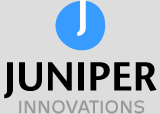Can your logistics operation or logistics business improve tracking processes more effectively and lower costs using Software as a Service (SaaS) or is SaaS simply an IT fad and fallacy?
What is SaaS?
Software as a Service (SaaS) can be a confusing term as it has slightly different meanings between service providers. As a general guide SaaS describes software applications that give organisations and individuals software access over the web rather than software installed locally on a PC, or in a client-server environment, or through remote connections. SaaS therefore provides a service, with commercial terms reflecting this such as monthly charges and pay per use.
Where is the added value?
Commercial terms and faster return on investment are often cited as the reason to use SaaS. For example organisations can be sold on the idea of:
- Less or zero capital expenditure
- Costs spread per month
- Free software upgrades
- Lower costs with no/low additional infrastructure or technical database administration required
- Faster implementation i.e. fewer IT personnel and resources required
- Link to remote hardware such as lone worker, GPS tracking, digital pen, phone and barcode scanning devices
- In some cases software that is device independent
In fact Juniper Innovations’ products cover all the bullets above e.g. with our warehouse management system, GPS tracking, lone and mobile worker products. Yet there is more than meets the eye with SaaS. More value can be added with:
- Software configurations that can be aligned to your value added organisational processes e.g. a warehouse system can be setup to give you the maximum value based on your building and resource constraints, shift patterns and storage location types
- How you use the often rich variety of data and management information accompanying SaaS products
- Being able to add additional products to your base application e.g. RFID for driver or inventory tracking
- Using the software even if temporary connection failures occur with the hardware
- Remotely diagnosting any hardware failures from the software e.g. GPS and lone worker devices
- Allowing resticted client login over the web
- Having your own branding in the form of a web template as a front end to the system
- Request specific functionality (for free) during subsequent upgrades
- Leaving the management and uptime of the hosted environment to the supplier who will have dedicated resources for this
- Strong IT hardware backup
Are there downsides to SaaS?
There are compelling arguments for SaaS’ usefulness in tracking environments e.g. for inventory, asset and personnel tracking. There too however are questions to be asked to see if SaaS is truly useful for your organisation:
- Will a high number of users or software usage increase the costs to the point where it is more cost effective to use a SaaS alternative?
- Are high levels of software customisation required either now or are likely in the future and is the software vendor prepared to deliver these either at all or within your timescales? Do any significant migration costs away from your existing systems and processes make SaaS a difficult model to work with?
- Is your organisation comfortable with company data, commercially sensitive or otherwise being stored and located off site? Do SaaS vendor privacy levels and data security meet your requirements?
- Are your internet connections robust enough i.e. how will your connection speed or any temporary losses of connection affect your business processes with the SaaS solution? Do you need greater or improved network support to use SaaS?
- Are different software configurations per site/plant required and can the software cope with this without affecting group wide reports and management information? Or can you use offline or different reporting processes?
- How easy is the software to integrate with your existing systems? Do standard interfaces exist that can be customised if required to fit with your infrastructure and business requirements?
- Can your preferred support service levels including redundancy, uptime and onsite support be managed by the SaaS supplier?
- How implementation support is charged and is this cost effective for you?
- Does a strong support team exist behind the SaaS application that can manage your support calls?
So should a SaaS solution for inventory, asset and personnel tracking be used?
As you can see it is a misconception to think that SaaS is selected for tracking solutions simply because no capital expenditure is required. There are a host of questions and issues to consider. If SaaS is considered simply as a money saving exercise without being thought through it can easily turn into a false economy. Plus no substitution exists for strong vendor due diligence. For organisations that require inventory, asset or personnel tracking help, that are prepared to be forward thinking, then SaaS has some excellent benefits. Inparticular strong cases for return on investment and the ability to “grow into” a solution i.e. for an organisation to be SaaS supported today and then later turn on or use existing SaaS functionality and product flexibility in the future when required.
